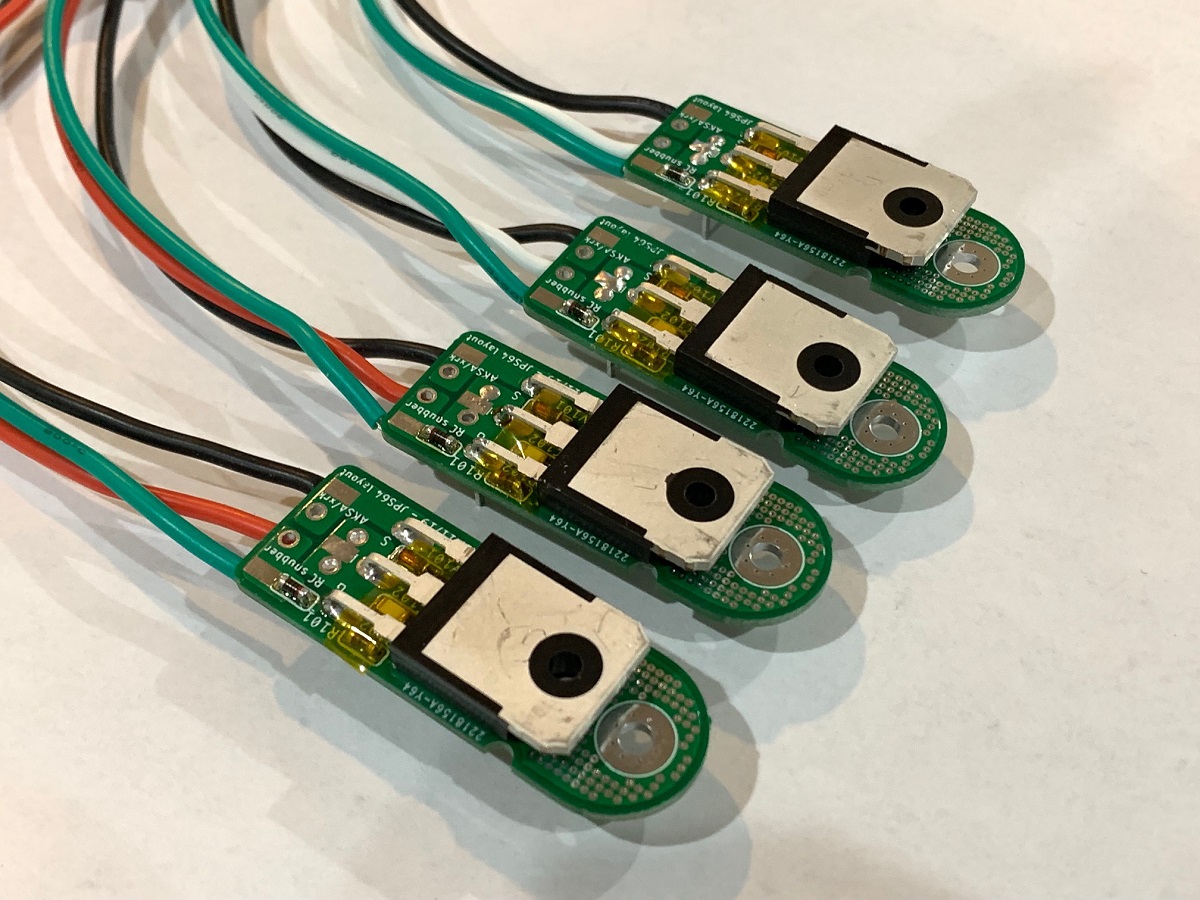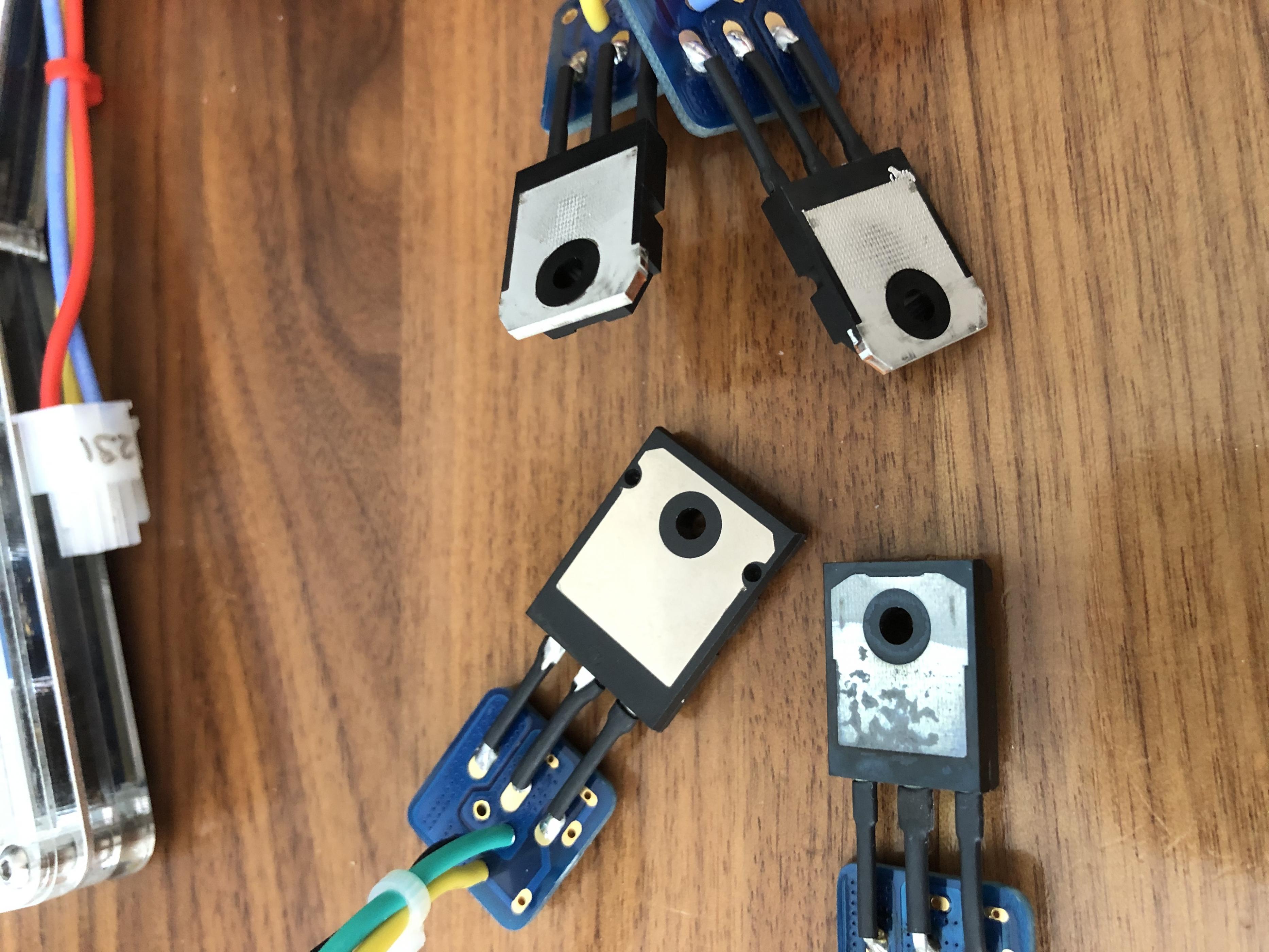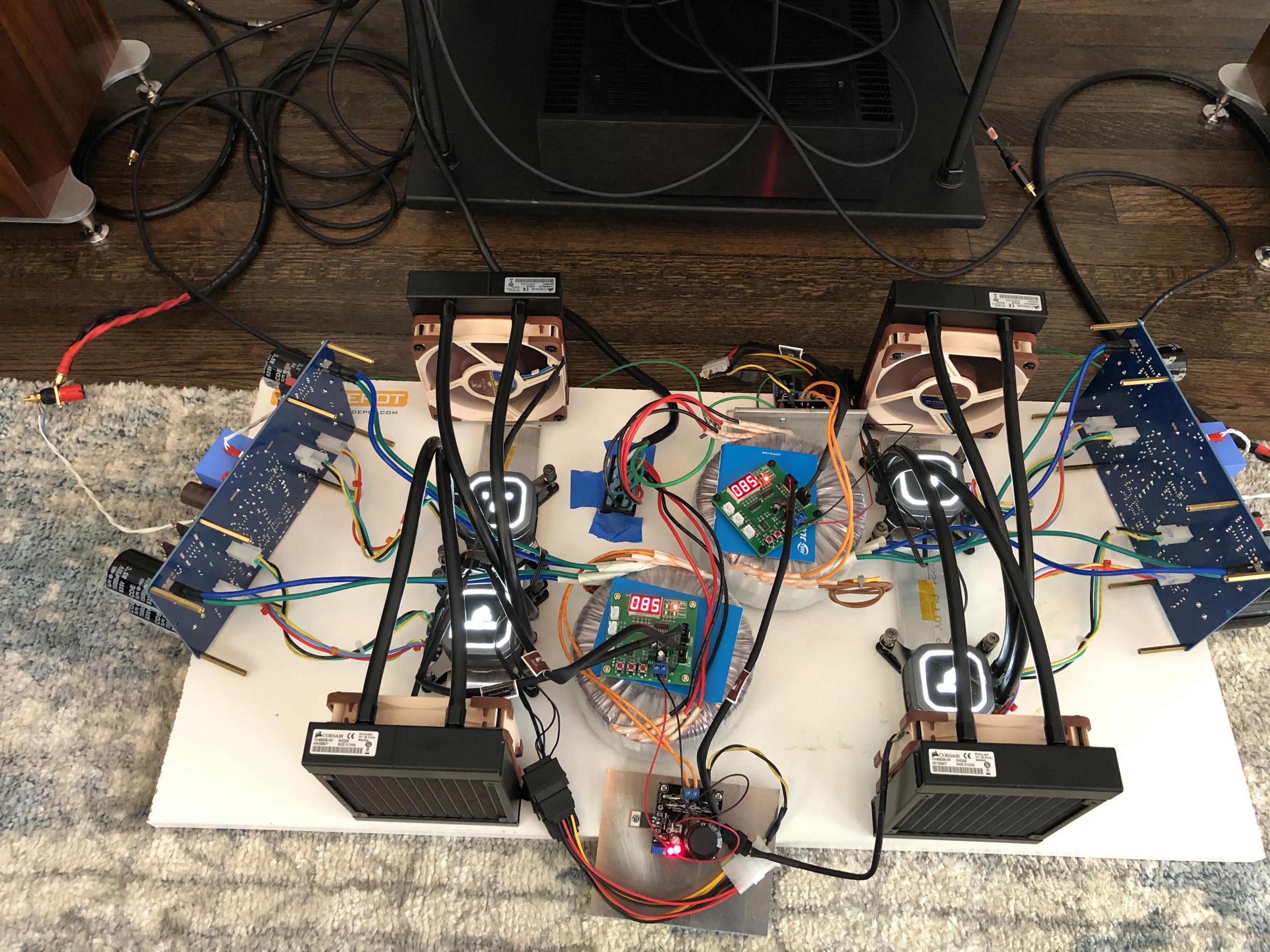I was looking around online while I wait for some new parts to arrive and saw an amp kit that came with little daughterboard type things so you could screw the mosfet to a more convenient or efficient place on the heatsink than where it may sit on the main PCB.
I think I could make use of this idea in my curernt build, as all the chips on mine are currently in the front half of the heatsink.
Is this a good idea and what kind of additional problmes could it bring to a noob like me
I think I could make use of this idea in my curernt build, as all the chips on mine are currently in the front half of the heatsink.
Is this a good idea and what kind of additional problmes could it bring to a noob like me
That’s what we do on Alpha Nirvana and ABBB and it works great. It decouples the mounting of the MOSFETs from the mountain of the amp. With Molex quick connects it allows pulling out an amp board and putting it back in under 5min. The external helper boards are called “Snubber boards” because we include an RC snubber next to the pins and also the gate stopper.
Alpha Nirvana 39w 8ohm Class A Amp

Alpha Nirvana 39w 8ohm Class A Amp
If the wires are too long that could add inductance that leads to oscillation. So it needs to be tested with an OScope to ensure there are no oscillations due to added parasitic inductance. It’s not a problem with the Alpha Nirvana.
If the wires are too long that could add inductance that leads to oscillation. So it needs to be tested with an OScope to ensure there are no oscillations due to added parasitic inductance. It’s not a problem with the Alpha Nirvana.
In that case, a ferrite bead comes in handy in the right spot.
If the wires are too long that could add inductance that leads to oscillation. So it needs to be tested with an OScope to ensure there are no oscillations due to added parasitic inductance. It’s not a problem with the Alpha Nirvana.
It must have been that amp I saw it being used on, I did see another DIYer that had just heatshrank wires to the mosfets too, without that handsome board.
What kind of distances would be safe to extend the connections out to? If I attempted this, I think Id be looking at maybe 15cm at the very most.
I have done 8in and it seems fine.
Is that with the Alpha Nirvana?
I'm probably not gonna do it with my current project just because it would be too much work to go back and change things, but I can think of a number of things I'd like to try with my next amp😀
Before this thread turns into an endless thing, consider that manufactured amps have been remotely mounting their outputs for decades now.
Look at a Pioneer SX-1250's layout....... or....... a McIntosh's MC2300, Sansui AU-717, or many many more.
Even stuff that I've designed and built.
At the low impedances of output stages, it's of no issue.
Look at a Pioneer SX-1250's layout....... or....... a McIntosh's MC2300, Sansui AU-717, or many many more.
Even stuff that I've designed and built.
At the low impedances of output stages, it's of no issue.
Use RC car silicone jacket wiring. It has extremely thin fine copper strands that make the cables very pliable so that they put less mechanical stress on the joints or legs. If you use one of those helper boards, they take the strain of the legs. Use a high current quick connect like Molex computer MB power connectors or the 4pin Minifit Jrs. They allow you to disconnect the MOSFET or BJT in seconds.
We also use this method on the ABBB amp. It has a smaller helper board without a clamp bolt hole.
This is Gtose’s build and he uses water cooling.


We also use this method on the ABBB amp. It has a smaller helper board without a clamp bolt hole.
This is Gtose’s build and he uses water cooling.
Last edited:
really interesting stuff, I'll look into Gtose's build later, looks a little like what I was considering.
- Home
- Amplifiers
- Solid State
- Mosfets extended off the board via daughterboard...ok?
